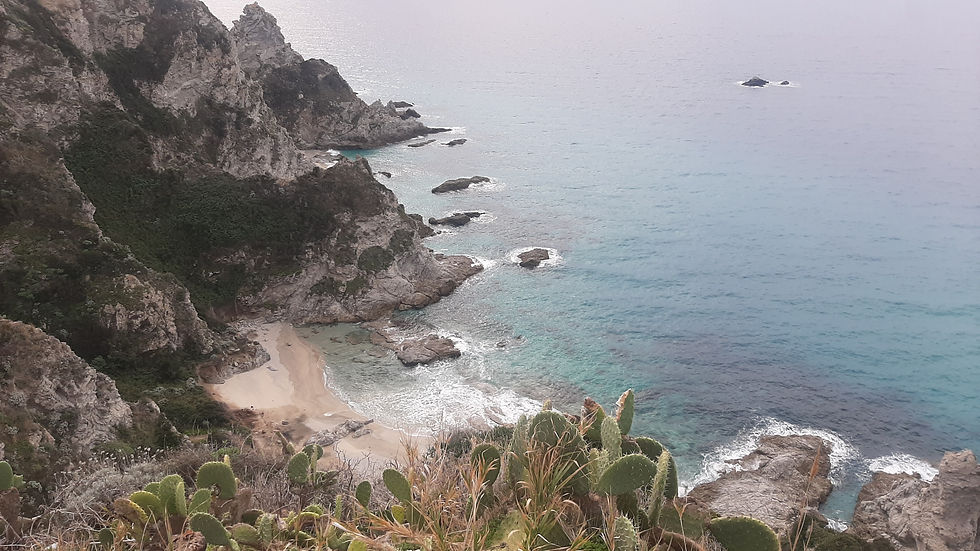CAPO VATICANO & NICOTERA- Siren song and Italian freedom fighters
- katharinaaronis

- Apr 5
- 2 min read
Updated: Apr 15
Follow me to breathtaking views and lesser-known chapters of Italian history

Heading further south, we arrive at Capo Vaticano, where we likely enjoy the most stunning sea view in all of Calabria.
In the distance, you can make out the silhouette of Mount Etna, and the sea is calm that day, yet the sound of the waves crashing is strong. It almost feels like stepping into a mythological time, as Homer placed the Sirens on the rocks off Capo Vaticano, where they lured passing sailors with their enchanting songs.
Today, at certain times, you might still hear their mythical singing 😉 "Vaticano" comes from the Latin "Vaticinium," meaning oracle. It is said that Odysseus visited the oracle of Manto here to learn about his fate and when he could return to Ithaca.
The day is still young, so the road trip continues to Nicotera, a charming little village on the way to Scilla. The village is known for its "lampioni innamorati," or "loving street lamps" – they’re called that because they appear as though one lamp is leaning on the other. It’s a cute idea, but a bit sad too, because it’s more than just a fun concept to attract visitors. Nicotera is a well-maintained stone village with restored houses, still in its winter slumber, but you immediately feel at home. A monument to the Italian freedom fighter Garibaldi stands here, as he made a stop with his troops just before conquering Sicily. Calabria, along with Sicily and other parts of Southern Italy, was part of the Kingdom of the Two Sicilies until 1860 (a separate blog post on that to follow). As with many such movements of the time, similar to the unification of Germany in 1871, there were nationalist movements in Italy that sought to unify the country. Instead of division into kingdoms and duchies, the movement aimed for Italian unity. Garibaldi then quickly conquered Sicily, leading to the founding of the Kingdom of Italy.











Comments